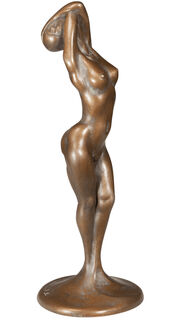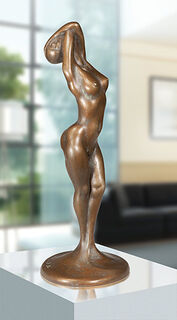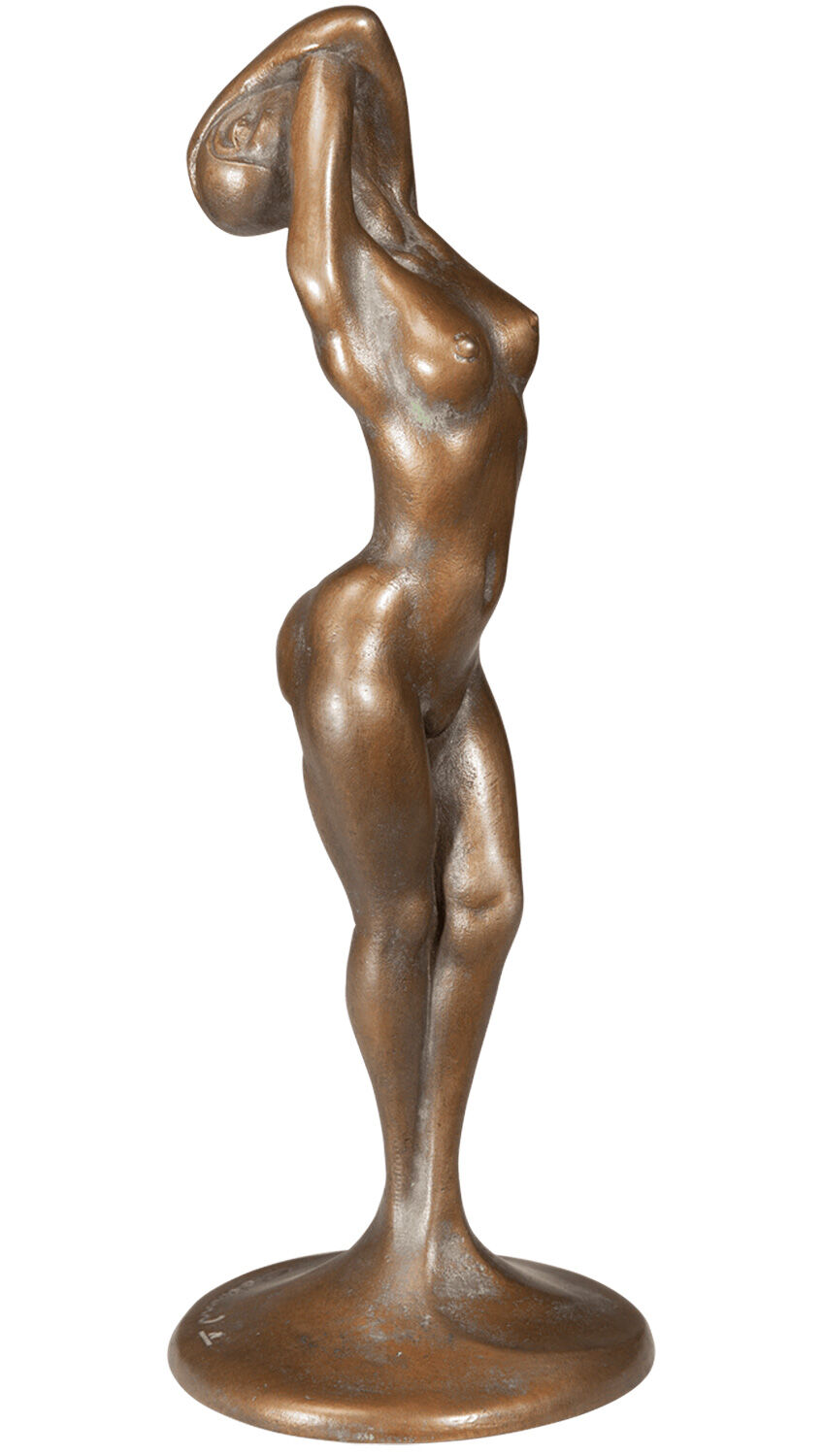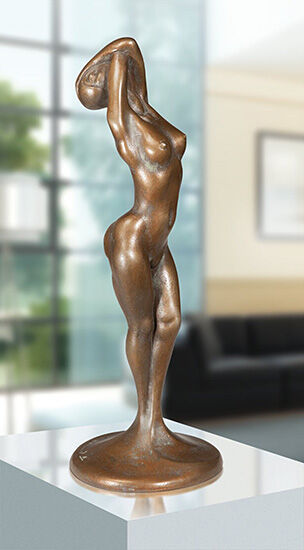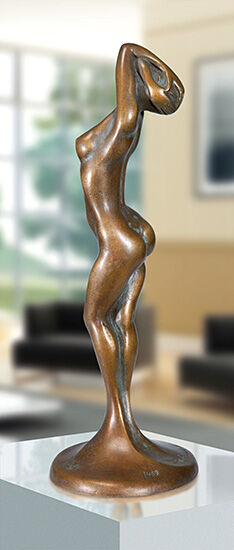Sculpture "Female Nude", bronze
Sculpture "Female Nude", bronze
Quick info
limited, 499 copies | numbered | signed | bronze | hand-chased and hand-patinated | size 22 x 8 x 8 cm (h/w/d) | weight approx. 1.05 kg
Detailed description
Sculpture "Female Nude", bronze
"My beautiful headless" is what Colani calls his nude. Sculpture in bronze, cast using the Lost-Wax-Process, chiselled and patinated by hand. Limited edition 499 copies, numbered and signed. Size 22 x 8 x 8 cm (h/w/d). Weight approx. 1.05 kg.
About Luigi Colani
1928-2019, Designer
Luigi Colani, born in Berlin in 1928, founded his legendary design workshop in 1955, with which he celebrated spectacular successes in a very short time: the Golden Rose international prize for creation and design in Geneva for the FIAT 1100 TV, the legendary Colani GT sports car, works for Alfa Romeo, Lancia, VW and BMW.
With the expansion to furniture creations, Colani rose to become a world-famous designer in the 1960s. This was followed by countless award-winning designs, studies of the future and products of world-famous manufacturers with which Luigi Colani decisively shaped the image of modern design, e.g. his ergonomic Canon T90 reflex camera, Sony headphones, which were exhibited in the New York Museum of Modern Art, computers, and many more.
An almost inexhaustible wealth of forms runs through his entire oeuvre like a leitmotif. Colani's designs are on permanent display in many museums around the world, including the design collection of the Pinakothek der Moderne in Munich.
In 2019, Luigi Colani died in Karlsruhe at the age of 91.
An alloy of copper with other metals (especially with tin) used since ancient times.
When casting bronze, the artist usually applies the lost-wax technique which is dating back more than 5000 years. It's the best, but also the most complex method of producing sculptures.
First, the artist forms a model of his sculpture. It is embedded in a liquid silicone rubber mass. Once the material has solidified, the model is cut out. The liquid wax is poured into the negative mould. After cooling down, the wax cast is removed from the mould, provided with sprues and dipped into ceramic mass. The ceramic mass is hardened in a kiln, whereby the wax flows out (lost mould).
Now we finally have the negative form, into which the 1400° C hot molten bronze is poured. After the bronze had cooled down, the ceramic shell is broken off and the sculpture is revealed.
Now the sprues are removed, the surfaces are polished, patinated and numbered by the artist himself or, to his specifications, by a specialist. Thus, each casting becomes an original work.
For lower-quality bronze castings, the sand casting method is often used which, however, does not achieve the results of a more complex lost-wax technique in terms of surface characteristics and quality.
Term for an art object (sculpture, installation), which is produced in multiple copies in a limited and numbered edition according to the artist‘s will.
Artist's multiples have been called the most accessible and affordable art on the market.
A plastic work of sculptural art made of wood, stone, ivory, bronze or other metals.
While sculptures from wood, ivory or stone are made directly from the block of material, in bronze casting a working model is prepared at first. Usually, it is made of clay or other easily mouldable materials.
The prime time of sculpture after the Greek and Roman antiquity was the Renaissance. Impressionism gave a new impulse to the sculptural arts. Contemporary artists such as Jorg Immendorf, Andora, and Markus Lupertz also enriched sculptures with outstanding works.

